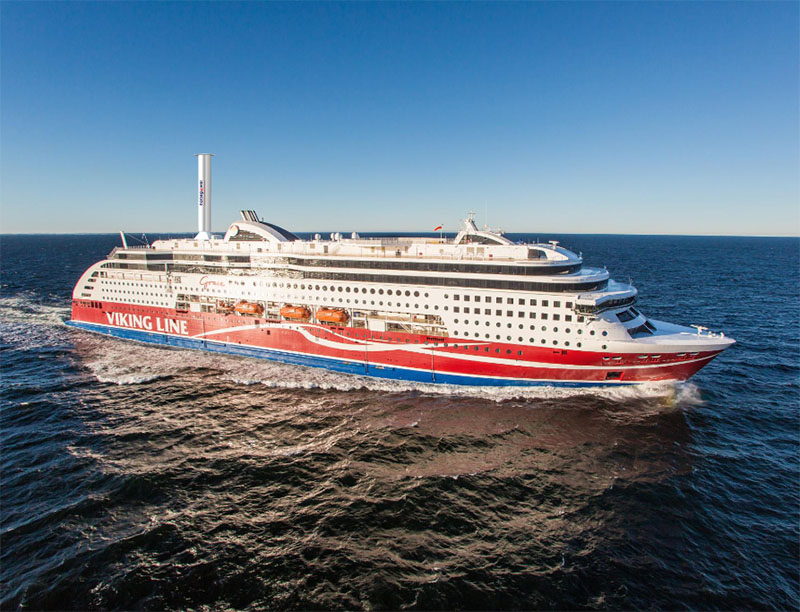Despite lackluster support from the Trump administration, offshore wind continues to get lots of positive propulsion, and that bodes well for the workboat industry which is banking on wind power as a new source of business.
Developments include: startup of the nation's first wind farm off the coast of Rhode Island; approval of what will be the largest U.S. offshore wind farm, off the East end of Long Island, and the New York governor's commitment to develop up to 2400 megawatts of offshore wind power by 2030; policies in 29 states that promote wind power; new projects proposed off the mid-Atlantic, and the extension by Congress of wind power tax credits.
Wind power is also being embraced as a credible source of environment-friendly fuel in the maritime industry.
The world's first LNG-wind powered hybrid passenger vessel is now in the works. Norsepower Oy Ltd, a wind-propulsion company based in Finland, recently signed an agreement to install its Rotor Sail Solution onboard Viking Line's LNG-powered cruise ferry.
The 57,565 GT Viking Grace, built in 2013, operates between Finland and Sweden. By the end of 2018, the ship will be retrofitted with a fully automated rotor sail unit that senses when the wind is strong enough to deliver fuel savings and triggers the start of rotors that harness wind to propel the ship.
The technology will help the vessel reduce its emissions, fuel burn and fuel costs, according to a statement from Norsepower. Carbon emissions could be reduced by 900 tons a year, the equivalent of cutting 300 tons of LNG fuel per year, the company said.
The company cites studies that show a possible 20% annual fuel savings on shipping routes that have favorable wind flows. The technology is especially suited for tankers, bulk carriers and ferries.
Several new studies agree that wind propulsion holds much promise for commercial shipping.
The U.K.-based Energy Technologies Institute says that wind power represents the only credible way to reduce carbon emissions from ships. The International Maritime Organization concluded in a report that reducing fuel consumption is more feasible way for ships to cut their emissions than trying to eliminate fossil fuels, citing the potential of wind propulsion. And, a report commissioned by the Directorate-General for Climate Action, an arm of the European Commission, suggests that wind technologies such as the rotor sail will have "significant potential" for fuel savings for commercial shipping once they reach "market maturity."
Seems like wind power is now in full sail.




